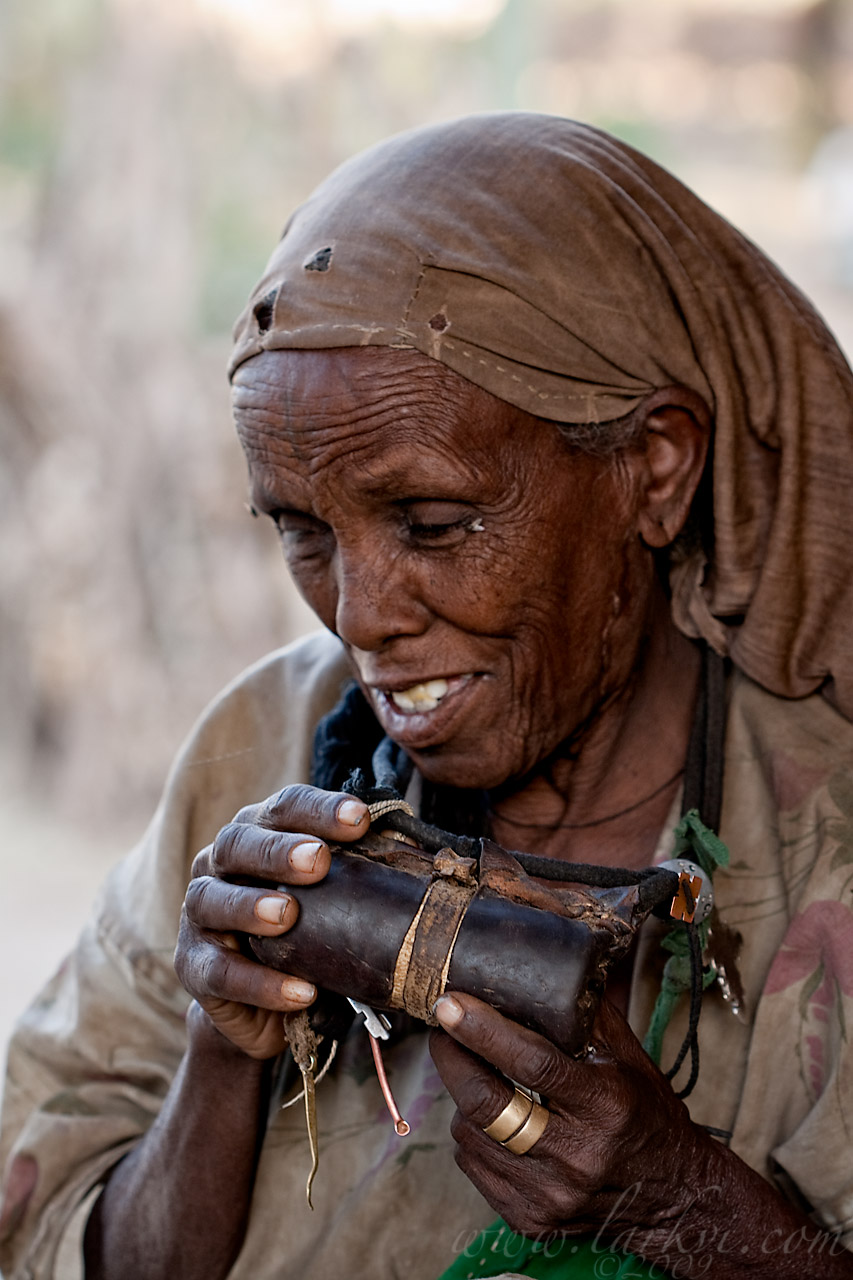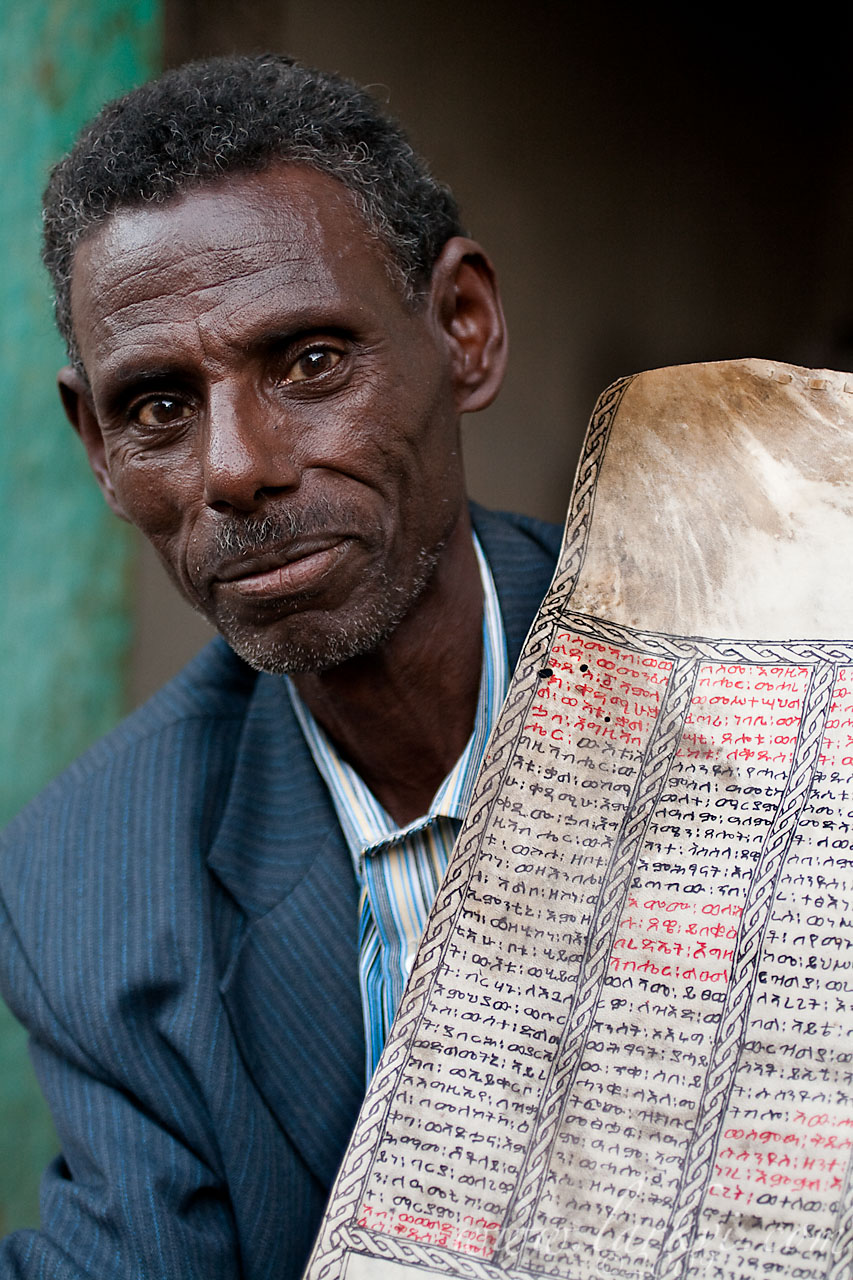A wooden tablet inscribed with a magical formula, when kept in a household, it is supposed to bring wealth into the household.
Tag: magic
Boy, Gälawdios, Amhara, Ethiopia, July 2009
Woman and Scroll, Axum, Tigray, Ethiopia, May 2009
An old woman shows her Kitab Ma’ari–a traditional magic scroll commissioned as a form of healing and worn in a scroll-case around her neck. The prayers on the scroll will be to protect from harmful magic, such as the evil eye or the magic of däbtäras (magicians) as well as to enlist the aid of angels or other powerful magical creatures with the aid of astrological correspondences (determined through a process known as gedfät). While the length of the scroll is regulated by her height, the great width of this scroll (and her obvious illness) suggests that there are extra magical prayers and talismanic images (Kitab or Tälsam), rather than the 3 or 1 that are normal.
I almost did not take this photo–I was just giving alms to the ill beggars that sit at this particular entrance to the St. Mary of Zion Church compound, on my way to the old church, when I noticed that this woman was wearing an extremely-large example of one of the texts that I was studying. She was gracious enough to let me take a photo to illustrate the way that these texts are worn.
Magic is regulated in Ethiopia as a form of medicine, and unlicensed or ‘black’ magic is punishable with prison. Most of the licensed practitioners are members of the Church, who are thought to have sufficient moral and religious training to use the magic effectively and appropriately.
If you are interested in seeing some images from magic scrolls, see Mercier, Jaques. Ethiopian Magic Scrolls.
Haleka Woldegabriel, Axum, Tigray, Ethiopia, April 2009
Haleka Woldegabriel is a artisan in Axum, primarily producing fairly low-quality woodcrafts for the tourist shop market, but in the past, he produced books and magic scrolls. Like many other scribes, he says that he has had to give it up because the economic situation of the scribe is no longer tenable, and other crafts are significantly more profitable. Haleka Woldegabriel is interesting for being the first scribe I have met so far to use steel pen-nibs in his writing, rather than bamboo pens.
He’s holding an incomplete magic scroll–he sends them to others for painting when the writing is done.




